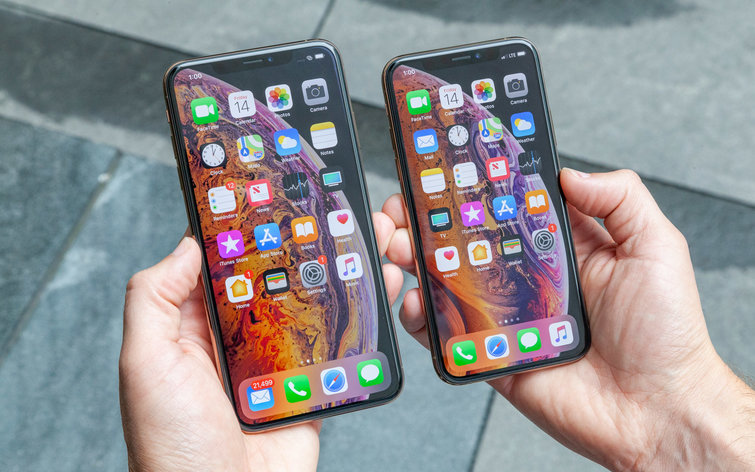iPhone XS Antennagate Can’t Be Fixed with Software, Expert Says
New owners of the Apple iPhone Xs are reporting extremely poor LTE and Wi-Fi connections in low signal conditions and the reason seems to be the antenna design itself.
The iPhone 4 #antennagate seems to be back with the iPhone Xs: an increasing number of users are reporting really bad LTE and Wi-Fi reception in low signal strength conditions compared to previous iPhones, with actual experimental data to back their claims.
And, no, it doesn’t appear anyone is “holding it wrong” — and no bumper may be able to fix the issue.

Writing for the blog WiWavelenght, radio expert Andrew J Shepherd says that he knew this was going to be a problem when he first reported on the lab test data found in FCC authorization filings for the XS and XS Max: “[the tests] raised potential red flags regarding the new iPhones' RF reception and transmission abilities in low signal strength conditions.”
According to Shepherd, some users have proposed that a firmware update may fix this, but he believes that the antenna design itself is at fault here.
Shepherd claims that “from an end user perspective, [software updates] can improve (or degrade) perceived performance. However, what software cannot do is update physical qualities locked in during design and manufacturing.”
MORE: iPhone XS Owners Report Weak Wi-Fi, Crappy Cell Service
In this regard, Apple may try to boost the conducted power to the antenna, but this “is not a likely solution” since the Cupertino company seems to be already pushing this to the limit.
Sign up to get the BEST of Tom's Guide direct to your inbox.
Get instant access to breaking news, the hottest reviews, great deals and helpful tips.
The software fix argument was the same for the iPhone 4 — but it didn’t really fix anything, just updated the way the phone showed its signal bars. The data and voice degradation was very real then—and only a bumper case seemed to mitigate the antenna short-circuit problem caused by what people called the iPhone 4 death grip.
The only fix for the iPhone XS, it seems, is changing the hardware. No bumper will help here, Shepherd says, only changing the design to increase antenna gain. It seems likely that, if confirmed, Apple may do this in a new manufacturing revision. Or maybe the company will wait until the next hardware redesign — like it did with the iPhone 4S, which eliminated the death grip.
For now, the iPhone XS antenna problem is only being reported by a a small albeit increasingly number of disgruntled users. For the millions of new iPhones already out there, it seems unlikely but not impossible that a full recall would be issued.
If the public clamor increases — and since people are paying a small fortune for these things, it may — maybe Apple will offer an in-store or mail-in swap service, like it apparently did for some with the iPhone 4.
We are reaching out to Apple for comment and will conduct on our own tests to keep you updated on this issue.
Jesus Diaz founded the new Sploid for Gawker Media after seven years working at Gizmodo, where he helmed the lost-in-a-bar iPhone 4 story and wrote old angry man rants, among other things. He's a creative director, screenwriter, and producer at The Magic Sauce, and currently writes for Fast Company and Tom's Guide.
-
jouten I notice that on my old iPad Pro 9.7 I have 4 bars of LTE but on my brand spanking new iPhone Xs Max, I only have 3 bars of LTE. Is this the discrepancy they speak of?Reply -
jagcorps Just got the unlocked iPhone XS Max for my girlfriend. It flew straight in from China. That's how Apple does it now when you order online, tracking shows it. I can 100% certify the antennae is pure garbage! We drive to a few locations every day. One of them to the rental stables to do horse chores. The bars have dropped from full strength to single LTE. She drops calls in notorious low spots where her 6S Plus never dropped previously. I was ready to bring it in for a full refund at one of the stores or ship back. But I wanted to seek out similar issues with others first, before our return time expires. If this is a hardware defect, I want to know now. Spent $1300 for this stupid thing as a b-day present. Have any of these complaints referred to carrier specific phones or unlocked? When I heard Apple would drop Qualcomm modems for Intel, everyone rolled their eyes. Intel modems are inferior compared to QC.Reply -
kevinfl1959 The new Apple watch was intriguing enough to have me wanting to switch from Samsung to iPhone's. However with all the new details being released and surfacing on the internet that these phones have bad antennas from Intel, I think I am going to pass on making the change. From what I read it is not carrier specific and some have the problem and some don't. I am not going to take the chance on a product that is having user reported failure rate.Reply -
jsramos81 Sincerely, i think that if you have the X, dont go for the Xs, and if you like Xs, better buy the X and pay less.. At the moment, Xs isnt a good option.Reply

